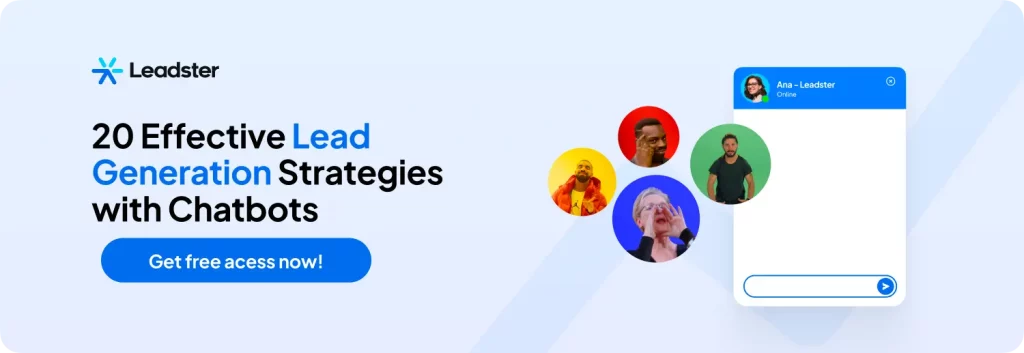Sales Pitch: 8 Tips to Create one Today
The time a salesperson has to show the value of their solution isn’t always long
On the contrary, it is quite common to have just a few minutes to grab the consumer’s attention and move forward with the sales process.
For this reason, the sales pitch is essential.
It serves as your business card, your opening presentation—the first thing your prospect will hear from you in a commercial approach—and it can determine the success of that interaction.
Want to learn the characteristics of a successful sales pitch and the step-by-step process to create this important sales tool?
Then keep reading the article we’ve prepared on the topic:
What Is a Sales Pitch?

A sales pitch is a compact version of your sales presentation. It should clearly and objectively explain the nature of your business, the benefits of your solution, and the advantages it brings to potential customers—all in about two minutes.
You might also be interested in: How to Use Emotional Intelligence to Sell More
What Does the Term “Pitch” Mean?
The term “pitch” refers to a short presentation that follows a predetermined structure. It originally emerged in the film industry when screenwriters had to present an entire movie concept in a much shorter version.
Why Is a Sales Pitch Important?

In today’s fast-paced world, people have less time for things that aren’t a priority in their lives.
The same goes for the attention of potential customers who don’t yet have a relationship with your brand.
Even if a prospect perfectly matches your ideal customer profile, the sales team doesn’t always get much time to speak with them—whether in a call or a scheduled meeting.
Before that point, the salesperson must capture the prospect’s attention, which is done through a strong pitch.
How Long Should a Sales Pitch Last?
The idea of a pitch in sales came from the need to engage potential customers quickly—sometimes in an event, between meetings, or even in an elevator.
Have you heard of the term “elevator pitch”?
It suggests that a sales approach should last no longer than the time it takes to reach a destination floor in an elevator.
In other words, a sales pitch should be quick—ideally lasting between 1 and 2 minutes.
Types of Sales Pitches

Of course, different situations call for different types of sales pitches.
Here are some common types of commercial presentations:
- One-line sales pitch: Used primarily in text messages, summarizing the offer in just a few words.
- Elevator pitch: A quick approach while the prospect is on the move.
- Phone sales pitch: Delivered over a quick phone call.
- Email sales pitch: Communicated via email.
- Social media pitch: Sent through social networks, usually on LinkedIn.
- Presentation sales pitch: A pitch delivered in a presentation format, often in events or partnerships.
- Follow-up sales pitch: Used later in the sales process to remind the prospect about your business and the reason for contact.
- Investor pitch: Frequently used in investment rounds.
- Pain-point pitch: Focused on addressing a specific, real problem the prospect’s company faces.
- One-minute sales pitch: A pitch with a strict time limit, forcing the salesperson to convey everything within one minute.
Related article: SPIN Selling: How to Apply the Methodology to Sell More

What Should a Sales Pitch Include?
For a sales pitch to be concise while still covering all key points, it’s helpful to follow a predefined structure.
Here are the essential elements for crafting your sales pitch:
- Address or ask about the problem your solution solves.
- Clearly state your brand’s value proposition.
- Explain how your company operates and its key differentiators.
- Provide evidence and data showcasing the benefits and improvements your solution brings.
- Share success stories from other clients.
- Conclude with open-ended questions to encourage further conversation.
How to Create a Strong Sales Pitch: 8 Tips
Beyond structure and content, several other factors contribute to an effective sales pitch.
Want more tips?
Here are eight golden rules for crafting a successful sales pitch:
1. Prioritize the Right Prospects
Make sure you’re spending time on the right leads.
Identify the most qualified prospects who are at the right stage in the sales funnel.
The chances of initiating a meaningful conversation are much higher with these leads.
When making decisions, rely on concrete data—not just intuition.
Read more: Tips to Avoid Mistakes in Your Sales Forecast for 2022
2. Research Before You Reach Out
Understand your potential customer before making contact.
- What challenges do they face daily?
- How will your solution specifically impact them?
- What unique selling points will catch their attention?
Without these insights, your pitch may lack relevance and persuasiveness.
3. Identify the Key Decision-Makers
In sales, there are influencers and decision-makers.
You want your pitch to reach the latter.
Before presenting your offer, make sure you’re speaking to the person with the authority to make purchasing decisions.
4. Create a Vision for Your Prospect’s Future
A great salesperson is also a great storyteller.
Use storytelling techniques to illustrate your prospect’s current situation and how your solution can transform it.
Inspire them to see the value in what you’re offering.
5. Share Your Experience
Build rapport with potential customers by sharing your industry insights and how your solution has positively impacted other clients.
This is where social proof, testimonials, and—most importantly—data come into play.
Read more: 9 Psychological Triggers That Still Work in Sales (2022)
6. Prepare to Overcome Sales Objections
One trait that separates good salespeople from great ones is the ability to handle objections effectively.
Prepare in advance by identifying potential objections and crafting strong counterarguments.
7. Listen to Understand, Not Just to Respond
While handling objections is important, your main focus should always be on the prospect—not just on promoting your solution.
Truly listen to what they’re saying. This will help you better understand their needs and refine your pitch for future interactions.
8. Present Options for Next Steps
Don’t wait for your listener to determine the next steps.
Take the initiative to suggest follow-up actions and, whenever possible, provide a few clear options.
Even if the customer isn’t ready to make a purchase or sign a contract, ensure that the sales flow remains active by proposing a free trial, a follow-up, or another future contact.
Read also: Business Proposal: Best Practices and a Free Template
4 Examples of Sales Pitches

G2Crowd
“G2 plays a key role in providing unique and authentic real-time advice. We offer buyers better guidance than traditional analyst firms, which can take up to two years to update and publish technology research. That timeline simply can’t keep up with the pace of technology. At G2, our goal is to be a trusted source that helps business professionals worldwide make better technology decisions.”
This company identified a gap in the tech research and analysis market, which frustrates customers relying on this type of service.
This type of sales pitch is highly effective because it focuses directly on the customer’s pain points and—most importantly—on how the company can solve them.
Mark Cuban
In this video, Mark Cuban, owner of the Dallas Mavericks basketball team, explains how he contributed to the team’s recovery and achieved record ticket sales with a sales pitch focused on the customer experience.
His core argument revolved around the low ticket cost (cheaper than eating at McDonald’s) and the unforgettable memories created through the excitement of live sports.
DoorBot
During his appearance on Shark Tank, the creator of DoorBot (now known as Ring) delivered a creative and humorous sales pitch.
Right from the start, he highlighted the customer’s problem with a quick demonstration: “Wouldn’t it be great to know who’s at your door before letting them in?”
He then explained the solution, demonstrated confidence in the product, and presented it as an attractive business opportunity.
Van Jones
“Van’s honest and thought-provoking social commentary has made him one of the most compelling and powerful public voices in America. His reach transcends age, race, geography, and political ideology.”
Van Jones, an American commentator, uses this sales pitch on his business website to attract companies interested in hiring him for speaking engagements.
In this example, he appeals to his authority as a public figure while addressing potential objections by emphasizing that his message resonates with all audiences, regardless of age, race, or political orientation.
Conclusion
Your sales pitch is a key factor in your commercial success, so it deserves your full attention.
Review our tips, examples, and suggested structure whenever you want to refine your quick sales approach.
And if you want to generate more business opportunities and more leads for your sales team to engage with, consider Conversational Marketing.
With this tool, you can generate up to 3x more leads compared to static forms, start lead qualification from the first customer interaction, and use automation to streamline the top of your sales funnel.
Start out today with our free trial. We are a lead generation chatbot that can qualify and organize your leads automatically. Click on the banner below to learn more.








